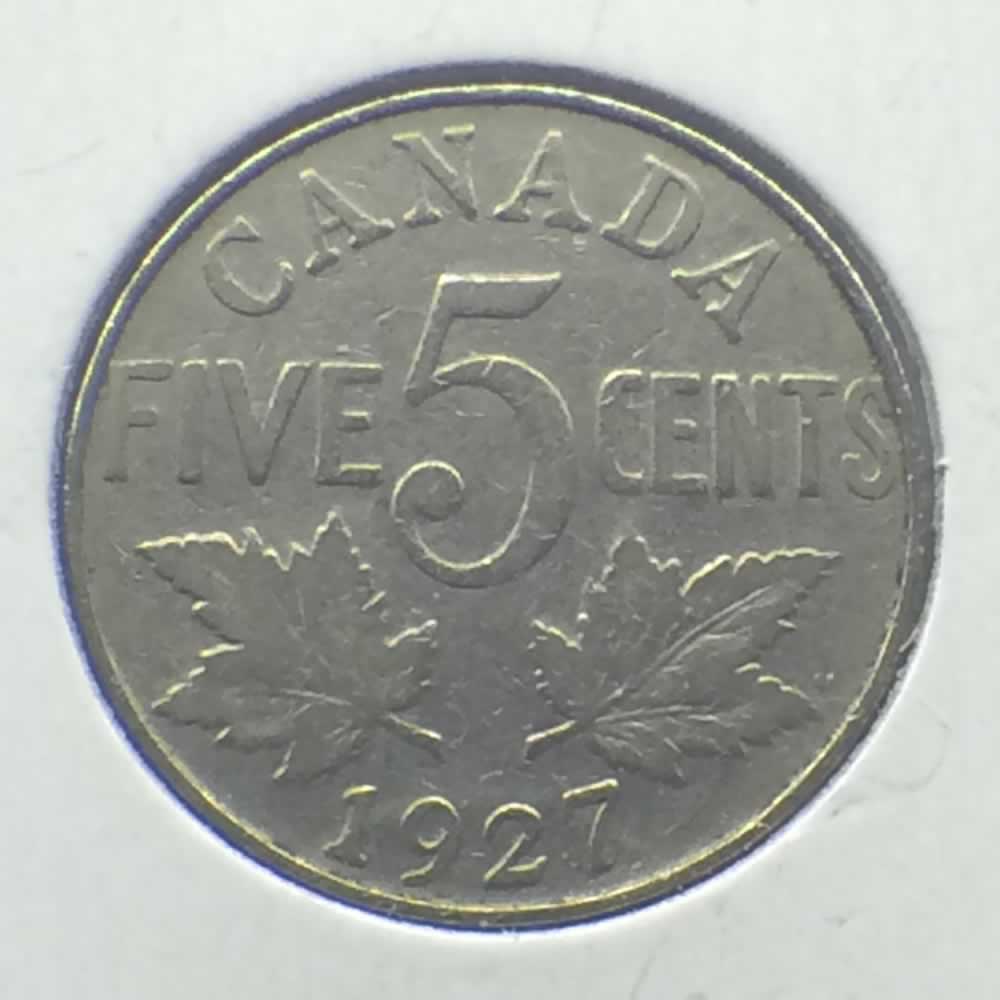1922-1936 - George V - Canadian Five Cents
The Canadian five-cent coin, commonly called a nickel, is a coin worth five cents or one-twentieth of a Canadian dollar. It was patterned on the corresponding coin in the neighbouring United States. Starting 4 February 2013, after the elimination of the penny, it became the smallest valued coin in the currency.
Years: 1922–1942
Mass: 4.54 g
Diameter: 21.21 mm
Shape: round
Composition: 99.9% nickel
REF
Canadian Circulation 5 Cents
Source: mint.ca
The beaver has a long history in Canada as both commodity and cultural icon. The Hurons honoured the beaver hundreds of years ago as the totem of their tribe. Native peoples used the beaver emblem to sign treaties with the first colonists. Since then the beaver has appeared in the heraldic bearings of Québec City and Montreal and even marked Canada's first postage stamp. The beaver coin design was created by Canadian artist G.E. Kruger Gray and was first used in 1937.
Years Minted: 1922 - 1936
Reverse Design: The two maple leaves
Reverse Designer: W.H.J. Blackmore's redesign of the 5-cent coin coincided with the increase of the coin's diameter.
Composition: 99% nickel
Weight (g): 4.54
Diameter (mm): 21.21
Thickness (mm): 1.7
Mintages:
1922 - 4,763,186
1923 - 2,475,201
1924 - 3,066,658
1925 - 200,050
1926 - 933,577
1927 - 5,285,627
1928 - 4,588,725
1929 - 5,562,262
1930 - 3,685,991
1931 - 5,100,830
1932 - 3,198,566
1933 - 2,597,867
1934 - 3,827,303
1935 - 3,900,000
1936 - 4,400,450
REF
Canada: 1922-1936 George V Five Cents
Source: typesets.wikidot.com
Quick Coinage Facts
Years Minted: 1922-1936
Composition: Nickel
Diameter: 21.2 mm
Weight: Nickel 4.4 grams
Total Series Mintage: 53,586,294
Obverse Design: Bust Design
Reverse Design: Maple Leafs
REF
5 Cents - George V
Source: en.numista.com
KM# 29
Features
Country Canada
Years 1922-1936
Value 5 Cents (0.05 CAD)
Metal Nickel
Weight 4.54 g
Diameter 21.21 mm
Thickness 1.7 mm
Engravers Edgar Bertram MacKennal (obverse)
W.H.J. Blakemore (reverse)
Shape Round
Orientation Medal alignment ↑↑
Demonetized yes
Edge Smooth
REF
 Canada 1927 Canadian 5 Cents ( C5C )
Canada 1927 Canadian 5 Cents ( C5C )


